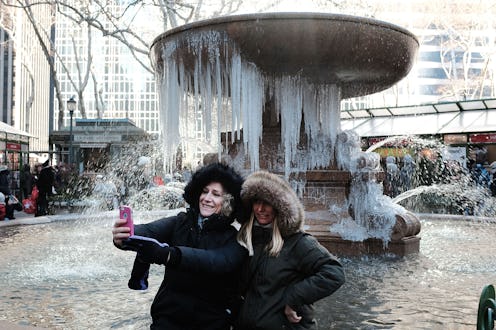
Maybe we didn’t need to attend that selfie school offered by the Tate Britain anyway, because according to a new study, what makes a good selfie might be poor photography. It turns out that selfies don’t adhere to three of photography’s most sacred rules. At all. Sooooooo I guess all we need to do to take killer selfies is do everything wrong?
Researchers from the Università di Parma and the University of Liverpool used a database of “images created by non-professional photographers” to test how three known principles of photographic composition play out in the world of selfies: The rule of thirds, the golden ratio rule, and the eye centering principle. We don’t know much about the origins of these rules; the researchers theorized that if they have something to do with “psychological mechanisms governing visually perceived balances,” then non-professional photographers should follow them the same way that professional ones do. Interestingly, though, they found out that this is definitely not the case.
By analyzing a collection of 388 non-professional iPhone selfies, the researchers found “systematic deviations from predictions based on all the rules we examined.” More people tend to follow the golden ratio rule than the rule of thirds or the eye centering principle, but even here, the evidence is “weak at best.” You can check out all the actual data in the paper itself, but the bottom line is that wherever those three compositions come from, they’re not instinctual — we have to learn them.
Yes, Stefon. Just like that.
I’d be curious to see whether the selfies on Instagram with the most likes adhere to the rules or break them; if we discount, say, celebrities with hoards of followers who will like everything they post, maybe there’s a connection between following photography rules — or breaking them — and how many likes an image gets. Food for thought — although if the selfie is truly dead, it probably doesn’t matter much anyway. Then again, we could always just start adding cats to everything, right?